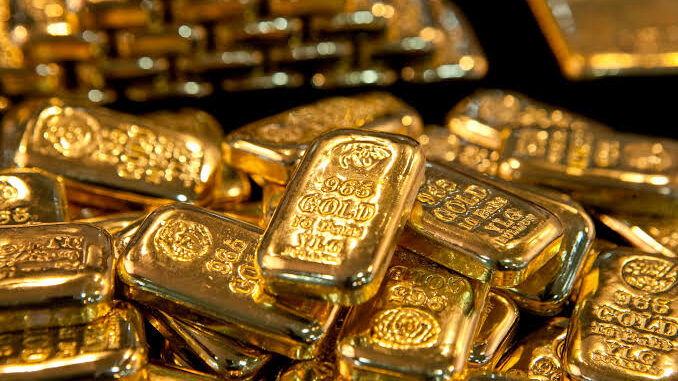
Gold Strikes a New High: An Overview**
In recent months, gold has reached unprecedented levels, capturing the attention of investors and analysts alike. As of October 2024, the price of gold has soared past historical records, fueled by a combination of economic uncertainties, geopolitical tensions, and shifts in monetary policy. This surge reflects not only the enduring appeal of gold as a safe-haven asset but also the complex interplay of factors driving its value.
### Economic Factors
The current economic landscape has played a crucial role in gold’s ascent. Persistent inflation rates, hovering around multi-decade highs, have eroded purchasing power and prompted investors to seek stability. Traditionally, gold is viewed as a hedge against inflation, making it a go-to asset during times of rising prices. With central banks, particularly the U.S. Federal Reserve, grappling with how to combat inflation without stifling economic growth, gold has become increasingly attractive.
Moreover, slowing global economic growth has added to the allure of gold. Data indicating declining GDP growth rates in major economies, coupled with concerns about potential recessions, has led many investors to reallocate their portfolios, favoring gold over more volatile assets like stocks.
### Geopolitical Tensions
Geopolitical instability is another significant driver of gold’s recent highs. Ongoing conflicts, trade disputes, and tensions in regions like Eastern Europe and the South China Sea have heightened market uncertainty. Investors often flock to gold during crises, perceiving it as a secure store of value. The current global climate, marked by unpredictability, has only reinforced this trend.
### Central Bank Policies
Central bank policies are also pivotal in shaping gold’s trajectory. In response to economic pressures, many central banks around the world have adopted accommodative monetary policies, including low interest rates and quantitative easing. These measures typically weaken fiat currencies, prompting investors to turn to gold as a safer alternative. Additionally, central banks themselves have been increasing their gold reserves, further driving demand and boosting prices.
### Market Sentiment
Market sentiment plays a vital role in gold pricing. The recent rally has been supported by growing interest from institutional investors, who see gold as a strategic asset. Exchange-Traded Funds (ETFs) backed by physical gold have seen significant inflows, reflecting a broader acceptance of gold in diversified portfolios. As more investors recognize the potential benefits of gold in mitigating risk, its market momentum has strengthened.
### Future Outlook
Looking ahead, several factors could influence gold prices. If inflation continues to rise, or if economic conditions deteriorate further, gold is likely to maintain its upward trajectory. Conversely, a stabilization in the economy or a decisive shift in central bank policy could dampen demand for gold, leading to potential price corrections.
In conclusion, gold’s recent rise to new highs underscores its enduring status as a safe haven amid uncertainty. While the current environment favors gold investment, the future remains uncertain. Investors should stay vigilant, considering both macroeconomic indicators and geopolitical developments as they navigate this dynamic market landscape. The interplay of these factors will ultimately determine whether gold can sustain its remarkable ascent or if it will face headwinds in the months ahead.
Leave a Reply